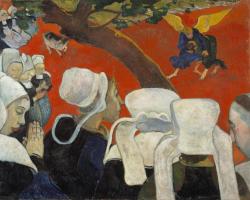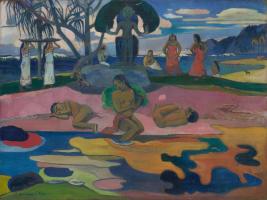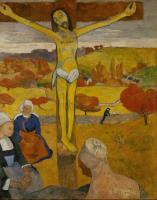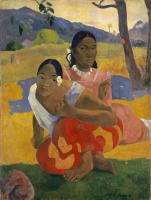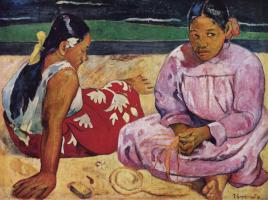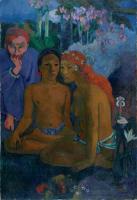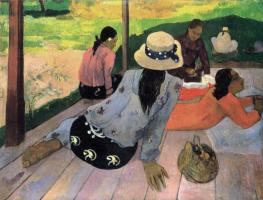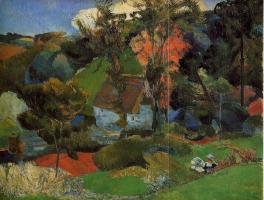Paul Gauguin
The French painter Paul Gauguin led an unsettled and stormy life, and his dramatic story has been as much the subject of novels and films as his work has been analyzed by art historians. He was descended on his mother’s side from a Spanish-Peruvian family, from whom he inherited his independent spirit, fierce pride and restless fiery temperament.
He did not begin to paint until his twenties, but in 1873 Gauguin gave up his business career and stable, bourgeois existence, abandoned his wife and five children, and devoted all his energies to art.
His restlessness and need for an escape from conventions took him to Martinique and, in 1891, to Tahiti, where his work began to develop the features for which he is best known: simplified figures, clear outlines, rich colour patterns and exotic tropical settings. His new life brought him no real happiness, however, and he was tortured by anxieties and self-doubts.
 “Your civilization is your disease; my barbarism is my restoration to health. I
am a savage”. Gauguin’s bold, non-naturalistic style in Primitive Tales
evolved while working with Van Gogh’s friend, Emile Bernard. Strong decorative
lines and flat, bright colours were inspired by simple woodcuts and Japanese
prints.
“Your civilization is your disease; my barbarism is my restoration to health. I
am a savage”. Gauguin’s bold, non-naturalistic style in Primitive Tales
evolved while working with Van Gogh’s friend, Emile Bernard. Strong decorative
lines and flat, bright colours were inspired by simple woodcuts and Japanese
prints.
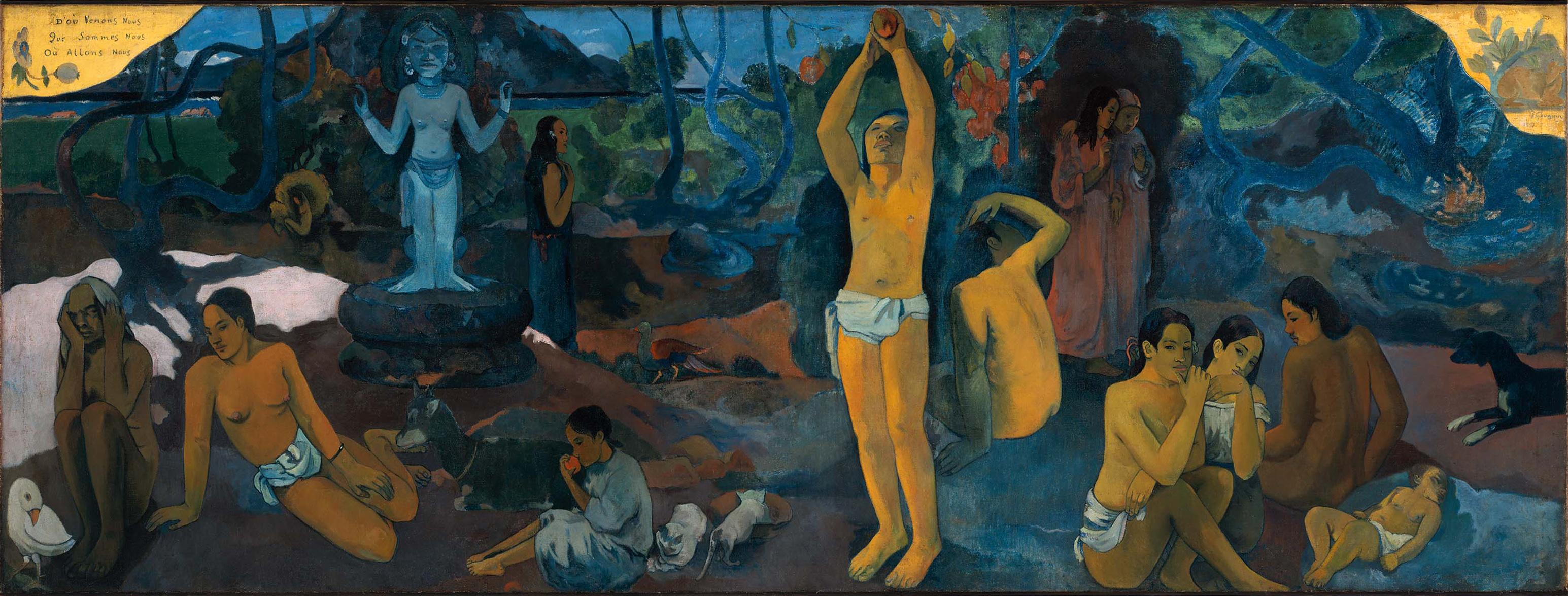 This troubled, searching picture reflects his state of mind and sums up his
thoughts about life before his attempted suicide. It is the largest painting
Gauguin ever produced (over twelve feet wide and some four-and-a-half feet
high), and he finished it in a month, working day and night at high pitch. It
was not meant to depict a real scene, but to reveal the world of the mind.
This troubled, searching picture reflects his state of mind and sums up his
thoughts about life before his attempted suicide. It is the largest painting
Gauguin ever produced (over twelve feet wide and some four-and-a-half feet
high), and he finished it in a month, working day and night at high pitch. It
was not meant to depict a real scene, but to reveal the world of the mind.
The painting shows a mysterious region filled with intense, thoughtful, monumental figures. In the centre a young man plucks a ripe fruit from the tree above his head ; on the right are young people with a baby; and on the left an old woman crouches waiting for death. The painting moves from infancy to old age, and from birth to death ; and at the back a stone idol, its expression enigmatic, raises its hands in benediction.
Gauguin believed that the universal force of nature could be expressed through the vibrations of colour. The landscape elements are shown in the vivid dark purples, blues and greens of the painting’s tropical background, and they seem to throb with the energy of life. The plants are like airborne snakes, curved, sinuous, binding the various features of the composition together. The artist himself considered this painting to be his masterpiece. It combines his brilliant, heightened colours and dramatic imagery with a passionate expression of his inner thoughts and feelings about the meaning of life.


